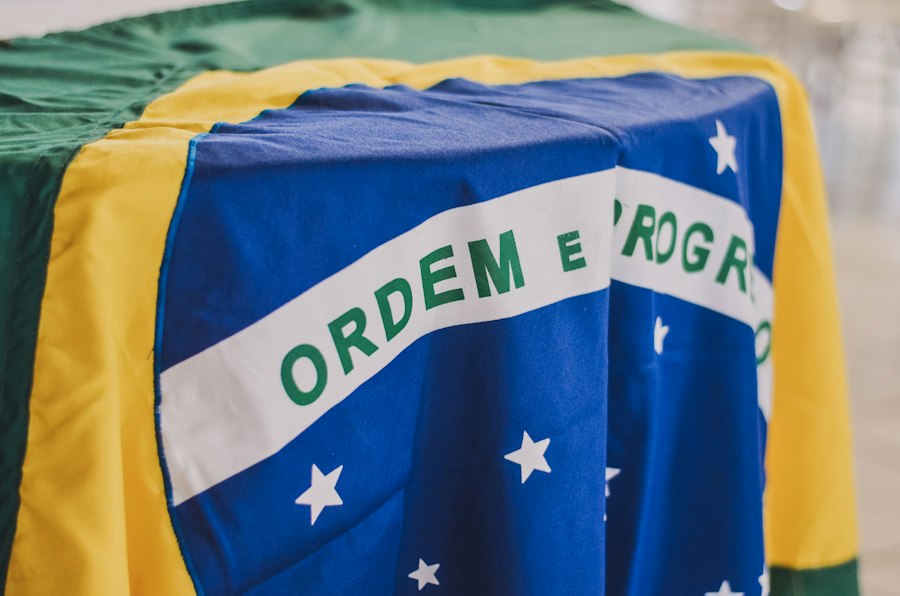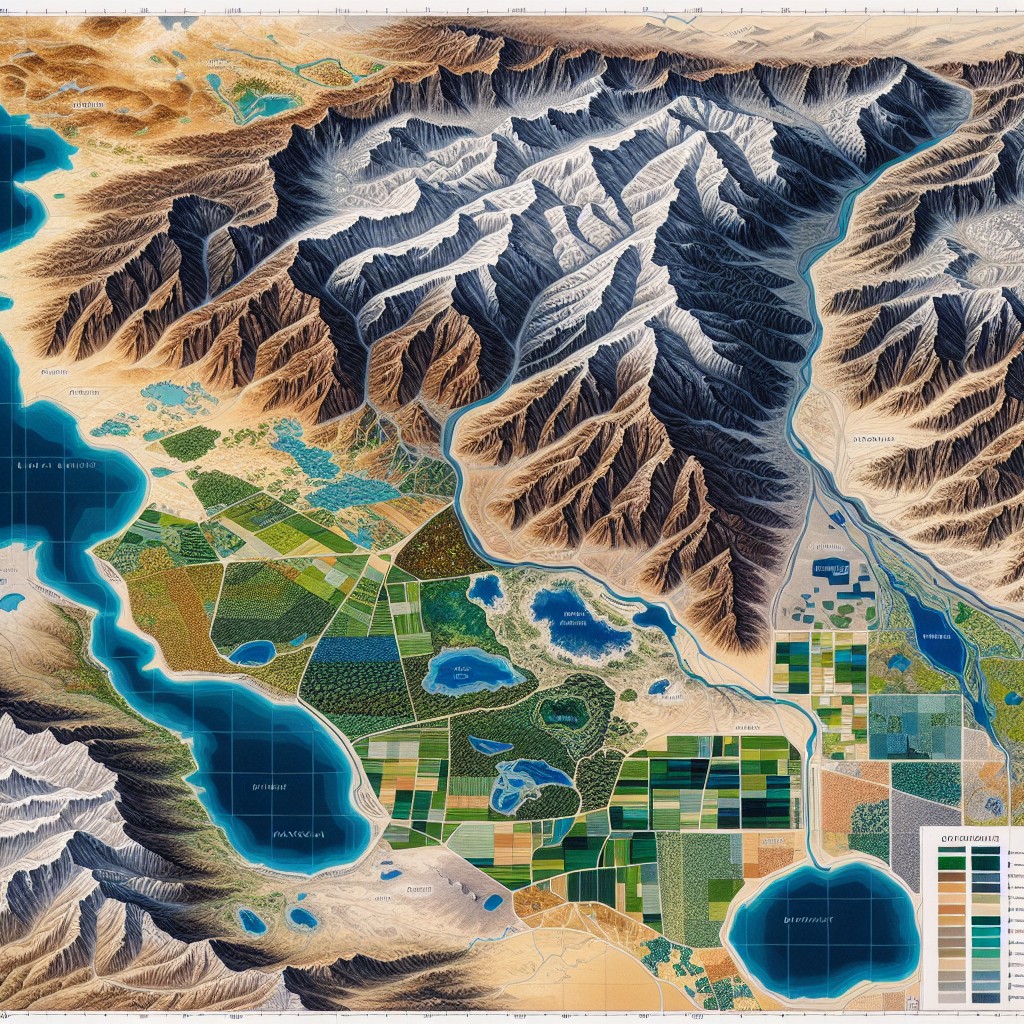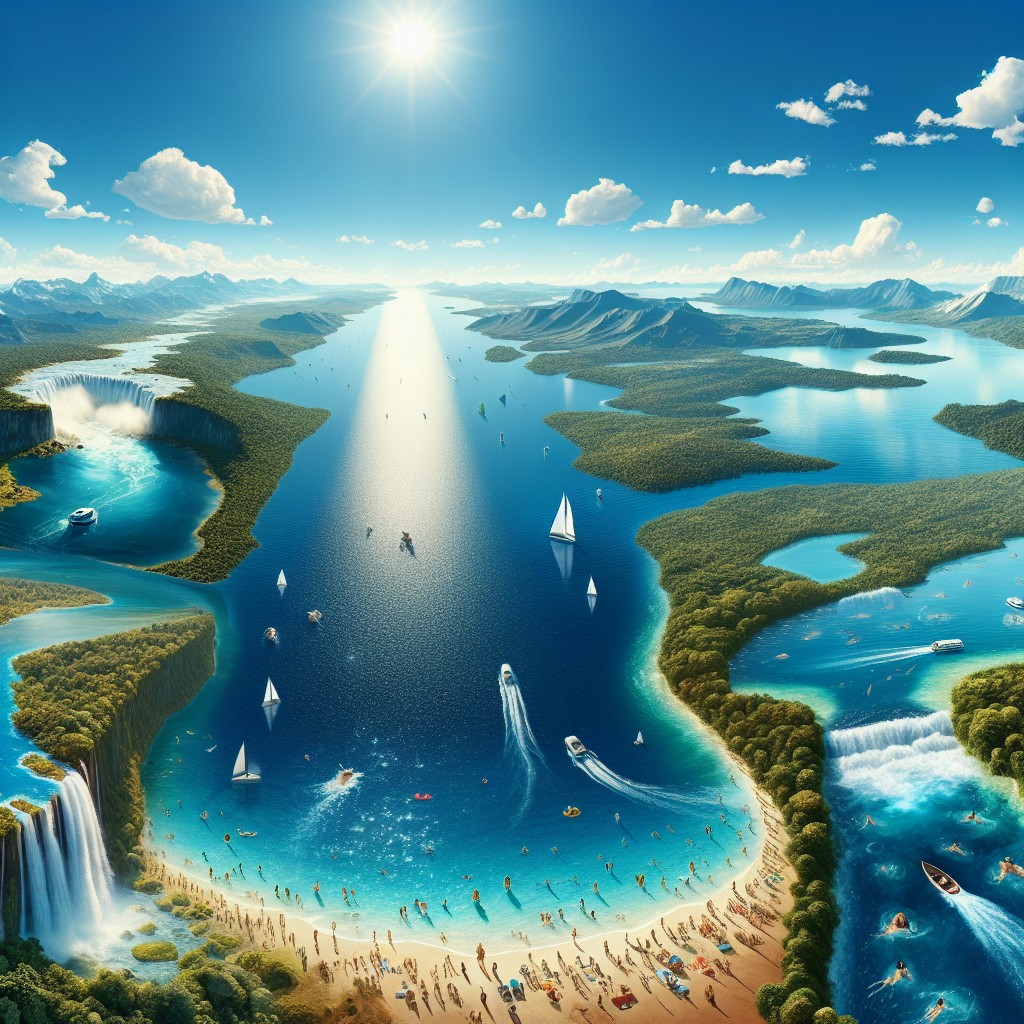Brazil is a country known for its vibrant culture, rich history, and diverse landscapes. From the bustling streets of Rio de Janeiro to the vast Amazon Rainforest, Brazil offers a unique and unforgettable experience for travelers. In this blog post, we will take a journey through Brazil’s rich cultural heritage, exploring its history, architecture, festivals, art, cuisine, natural wonders, adventure sports, and warm hospitality. By the end of this article, you will have a deeper understanding of what makes Brazil such a fascinating and captivating destination.
Key Takeaways
- Brazil has a rich cultural heritage that spans centuries and includes influences from indigenous tribes, European colonizers, and African slaves.
- Brazilian architecture is a marvel to behold, with styles ranging from colonial to modern and featuring iconic landmarks like the Christ the Redeemer statue in Rio de Janeiro.
- Brazilian festivals and celebrations are colorful and lively, with Carnival being the most famous and attracting millions of visitors each year.
- Brazil is home to a vibrant artistic scene, with music, dance, and visual arts that showcase the country’s diverse cultural influences.
- Brazilian cuisine is a gastronomic adventure, with dishes that range from traditional feijoada to modern fusion cuisine that incorporates local ingredients and flavors.
Brazil’s Rich Cultural Heritage: A Journey Through Time
Brazil’s cultural heritage is deeply rooted in its history. The country has been inhabited by indigenous tribes for thousands of years, and their influence can still be seen today. These tribes have left behind a legacy of art, music, dance, and spirituality that is an integral part of Brazilian culture.
The arrival of the Portuguese in the 16th century marked a turning point in Brazilian history. The Portuguese colonization had a profound impact on Brazilian culture, introducing the Portuguese language, Catholicism, and European customs. The blending of Portuguese and indigenous cultures gave rise to a unique Brazilian identity.
Another significant influence on Brazilian culture was the arrival of African slaves during the colonial period. These slaves brought with them their own traditions, music, dance, and cuisine, which became an integral part of Brazilian culture. Today, Afro-Brazilian culture is celebrated and cherished throughout the country.
The Marvels of Brazilian Architecture: From Colonial to Modern
Brazilian architecture is a reflection of the country’s rich cultural heritage. From colonial buildings to modern skyscrapers, Brazil offers a diverse range of architectural styles.
Colonial architecture is one of the most prominent architectural styles in Brazil. The colonial period saw the construction of grand churches, palaces, and houses that still stand today. The most famous example of colonial architecture in Brazil is the historic city of Ouro Preto, which is a UNESCO World Heritage site.
In the 20th century, Brazil saw a surge in modern architecture. Architects such as Oscar Niemeyer and Lúcio Costa played a significant role in shaping the modern architectural landscape of Brazil. Their iconic designs, such as the Brasília Cathedral and the Museum of Contemporary Art in Niterói, have become symbols of Brazilian architecture.
The Colorful World of Brazilian Festivals and Celebrations
| Festival/Celebration | Date | Location | Attendance | Description |
|---|---|---|---|---|
| Carnaval | February/March | Rio de Janeiro | 2 million+ | A week-long celebration with parades, samba dancing, and colorful costumes. |
| Festa Junina | June | Throughout Brazil | Varies | A celebration of the harvest season with traditional food, music, and dance. |
| Bumba Meu Boi | June/July | Northeastern Brazil | 500,000+ | A folk festival with music, dance, and a reenactment of the death and resurrection of a bull. |
| Lavagem do Bonfim | January | Salvador | 100,000+ | A religious festival with a procession to wash the steps of the Bonfim Church. |
| Festa do Divino | May/June | Throughout Brazil | Varies | A Catholic celebration with processions, music, and traditional food. |
Brazil is known for its vibrant festivals and celebrations, which are a reflection of its diverse culture and traditions. The most famous festival in Brazil is Carnival, which takes place in the weeks leading up to Lent. Carnival is a time of music, dance, and elaborate costumes, with parades taking place in cities across the country. The largest Carnival celebration is held in Rio de Janeiro, where samba schools compete for the title of the best parade.
In addition to Carnival, Brazil has a wide range of other festivals and celebrations that showcase its cultural diversity. For example, Festa Junina is a traditional Brazilian festival that celebrates the harvest season. It features music, dance, and traditional food such as cornbread and quentão (a hot alcoholic beverage).
The Artistic Treasures of Brazil: Music, Dance, and Visual Arts
Brazil has a rich artistic heritage that encompasses music, dance, and visual arts. From samba to bossa nova, Brazilian music has captivated audiences around the world. Some of the most famous Brazilian musicians include Antonio Carlos Jobim, Vinicius de Moraes, and João Gilberto.
Brazilian visual arts are also highly regarded. Artists such as Tarsila do Amaral and Candido Portinari have made significant contributions to the art world with their unique styles and representations of Brazilian culture. The Museu de Arte de São Paulo (MASP) is one of the most important art museums in Brazil, housing a vast collection of Brazilian and international art.
Dance is another integral part of Brazilian culture. The most famous dance style in Brazil is samba, which originated in the Afro-Brazilian communities of Rio de Janeiro. Samba is characterized by its energetic movements and syncopated rhythms. Other popular dance styles in Brazil include forró, axé, and capoeira.
The Diversity of Brazilian Cuisine: A Gastronomic Adventure

Brazilian cuisine is as diverse as its culture, with each region offering its own unique flavors and dishes. The country’s cuisine is a fusion of indigenous, Portuguese, African, and immigrant influences.
In the north of Brazil, you will find dishes such as tacacá (a soup made with tucupi, a yellow sauce extracted from manioc), vatapá (a spicy shrimp stew), and açaí (a purple berry that is often served as a smoothie or in bowls with various toppings).
In the northeast, the cuisine is heavily influenced by African flavors. Dishes such as acarajé (deep-fried balls of black-eyed pea dough filled with shrimp and other ingredients) and moqueca (a fish stew made with coconut milk) are popular in this region.
In the south, the cuisine is influenced by European immigrants, particularly Italians and Germans. Churrasco (barbecue) is a popular dish in this region, as well as feijoada (a black bean stew with pork) and coxinha (deep-fried chicken croquettes).
The Natural Wonders of Brazil: Exploring the Amazon Rainforest
Brazil is home to one of the most biodiverse regions on Earth – the Amazon Rainforest. Covering an area of over 5.5 million square kilometers, the Amazon is home to countless species of plants and animals.
The Amazon Rainforest is a paradise for nature lovers and adventure seekers. It offers opportunities for hiking, wildlife spotting, and river cruises. Visitors can explore the dense jungle, discover hidden waterfalls, and encounter exotic wildlife such as jaguars, monkeys, and colorful birds.
Ecotourism is a growing industry in Brazil, with many lodges and tour operators offering sustainable and responsible travel experiences in the Amazon. These eco-friendly accommodations provide visitors with the opportunity to learn about the rainforest’s delicate ecosystem and contribute to its conservation.
The Splendor of Brazilian Beaches: Sun, Sand, and Surf
Brazil is famous for its stunning beaches, which stretch along its coastline for thousands of kilometers. Whether you’re looking for a lively beach with a vibrant atmosphere or a secluded spot to relax and unwind, Brazil has it all.
One of the most famous beaches in Brazil is Copacabana in Rio de Janeiro. With its golden sand, crystal-clear waters, and iconic boardwalk, Copacabana is a must-visit destination for beach lovers. Ipanema Beach, also in Rio de Janeiro, is another popular spot known for its beautiful sunsets and lively beach culture.
In the northeast of Brazil, you will find some of the country’s most picturesque beaches. Praia do Forte in Bahia is known for its natural pools and coral reefs, while Jericoacoara in Ceará offers pristine white sand dunes and turquoise waters.
The Thrill of Adventure Sports in Brazil: Rafting, Trekking, and More
For adrenaline junkies and outdoor enthusiasts, Brazil offers a wide range of adventure sports and activities. From rafting down raging rivers to trekking through lush rainforests, there is something for everyone.
Rafting is a popular adventure sport in Brazil, with several rivers offering thrilling rapids and breathtaking scenery. The Rio Negro in Minas Gerais and the Rio Jacaré Pepira in São Paulo are two of the best rivers for rafting in Brazil.
Trekking is another popular activity, with many trails and national parks to explore. The Chapada Diamantina in Bahia is a paradise for hikers, with its rugged landscapes, waterfalls, and caves. The Serra dos Órgãos National Park in Rio de Janeiro is another great destination for trekking, with its challenging trails and stunning views.
The Fascinating History of Brazil: From Indigenous Tribes to Modern Times
Brazil has a fascinating history that spans thousands of years. The country was originally inhabited by indigenous tribes, who lived off the land and had a deep connection to nature. These tribes left behind a rich cultural heritage that is still celebrated today.
In 1500, the Portuguese arrived in Brazil and established the colony of Brazil. The Portuguese colonization had a profound impact on Brazilian culture, introducing the Portuguese language, Catholicism, and European customs. The blending of Portuguese and indigenous cultures gave rise to a unique Brazilian identity.
Brazil gained independence from Portugal in 1822 and became a republic in 1889. Throughout the 20th century, Brazil experienced periods of political instability and economic growth. Today, Brazil is one of the largest economies in the world and a major player on the global stage.
The Warm Hospitality of Brazilians: A Truly Memorable Experience
One of the things that sets Brazil apart from other destinations is its warm and welcoming hospitality. Brazilians are known for their friendliness, openness, and willingness to help others.
Hospitality is deeply ingrained in Brazilian culture. Guests are treated like family and are often invited to share meals and celebrations with their hosts. Brazilians take pride in their ability to make visitors feel at home and ensure that they have a memorable experience.
Personal anecdotes of experiences with Brazilian hospitality are abundant. Travelers often recount stories of being invited to join in a game of beach volleyball, being offered a home-cooked meal by a stranger, or being serenaded by a group of musicians on the streets of Rio de Janeiro. These experiences leave a lasting impression and create lifelong memories.
Brazil’s rich cultural heritage, stunning landscapes, and warm hospitality make it a truly unique destination. From the vibrant streets of Rio de Janeiro to the pristine beaches of Bahia, Brazil offers something for every traveler. Whether you’re interested in exploring the country’s history, indulging in its cuisine, or immersing yourself in its vibrant festivals, Brazil is sure to leave a lasting impression. So why wait? Start planning your trip to Brazil and experience its culture firsthand.
FAQs
What is Brazil?
Brazil is a country located in South America. It is the fifth largest country in the world by both land area and population.
What is the capital of Brazil?
The capital of Brazil is Brasília.
What is the official language of Brazil?
The official language of Brazil is Portuguese.
What is the currency of Brazil?
The currency of Brazil is the Brazilian real.
What is the population of Brazil?
As of 2021, the population of Brazil is approximately 213 million people.
What are some famous landmarks in Brazil?
Some famous landmarks in Brazil include the Christ the Redeemer statue in Rio de Janeiro, the Amazon Rainforest, and the Iguazu Falls.
What is the economy of Brazil like?
Brazil has a mixed economy with a large service sector, as well as significant agricultural and industrial sectors. It is one of the world’s largest producers of coffee, soybeans, and beef.
What is the climate like in Brazil?
The climate in Brazil varies depending on the region, but it is generally tropical or subtropical. The Amazon region has a hot and humid climate, while the southern regions have a more temperate climate.


